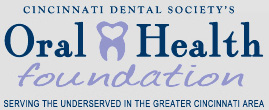Dentistry is defined as the evaluation, diagnosis, prevention and/or treatment (nonsurgical, surgical or related procedures) of diseases, disorders and/or conditions of the oral cavity, maxillofacial area and/or the adjacent and associated structures and their impact on the human body; provided by a dentist, within the scope of his/her education, training and experience, in accordance with the ethics of the profession and applicable law. (As adopted by the 1997 American Dental Association House of Delegates)
It is recognized there are overlapping responsibilities among the recognized areas of dental practice. However, as a matter of principle, a specialist shall not provide routine procedures that are beyond the scope of his speciality. (ADA, approved May 1976)
Dental Public Health: Dental public health is the science and art of preventing and controlling dental diseases and promoting dental health through organized community efforts. It is that form of dental practice that serves the community as a patient rather than the individual. It is concerned with the dental health education of the public, with applied dental research, and with the administration of group dental care programs as well as the prevention and control of dental diseases on a community basis. (ADA, adopted May 1976)
Endodontics: Endodontics is the branch of dentistry that is concerned with the morphology, physiology and pathology of the human dental pulp and periradicular tissues. Its study study and practice encompass the basic and clinical sciences including biology of the normal pulp, the etiology, diagnosis, prevention and treatment of diseases and injuries of the pulp and associated periradicular conditions. (ADA, adopted December 1983)
Oral and Maxillofacial Pathology: Oral pathology is the specialty of dentistry and discipline of pathology that deals with the nature, identification, and management of diseases affecting the oral and maxillofacial regions. It is a science that investigates the causes, processes, and effects of these diseases. The practice of oral pathology includes research and diagnosis of diseases using clinical, radiographic, microscopic, biochemical, or other examinations. (ADA, adopted May 1991)
Oral and Maxillofacial Radiology: Oral and maxillofacial radiology is the specialty of dentistry and discipline of radiology concerned with the production and interpretation of images and data produced by all modalities of radiant energy that are used for the diagnosis and management of diseases, disorders and conditions of the oral and maxillofacial region. (ADA, adopted April 2001)
Oral and Maxillofacial Surgery: Oral and maxillofacial surgery is the specialty of dentistry which includes the diagnosis, surgical and adjunctive treatment of diseases, injuries and defects involving both the functional and esthetic aspects of the hard and soft tissues of the oral and maxillofacial regions. (ADA, adopted October 1990)
Orthodontics and Dentofacial Orthopedics: Orthodontics and dentofacial orthopedics is the dental specialty that includes the diagnosis, prevention, interception, and correction of malocclusion, as well as neuromuscular and skeletal abnormalities of the developing or mature orofacial structures. (ADA, adopted April 2003)
Pediatric Dentistry: Pediatric Dentistry is an age-defined specialty that provides both primary and comprehensive preventive and therapeutic oral health care for infants and children through adolescence, including those with special health care needs. (ADA, adopted 1995)
Periodontics: Periodontics is that specialty of dentistry which encompasses the prevention, diagnosis and treatment of diseases of the supporting and surrounding tissues of the teeth and their substitutes and the maintenance of the health, function and esthetics of these structures and tissues. (ADA, adopted December 1992)
Prosthodontics: Prosthodontics is that branch of dentistry pertaining to the restoration and maintenance of oral functions, comfort, appearance and health of the patient by the restoration of natural teeth and/or the replacement of missing teeth and contiguous oral and maxillofacial tissues with artificial substitutes. (ADA, adopted April 2003)

